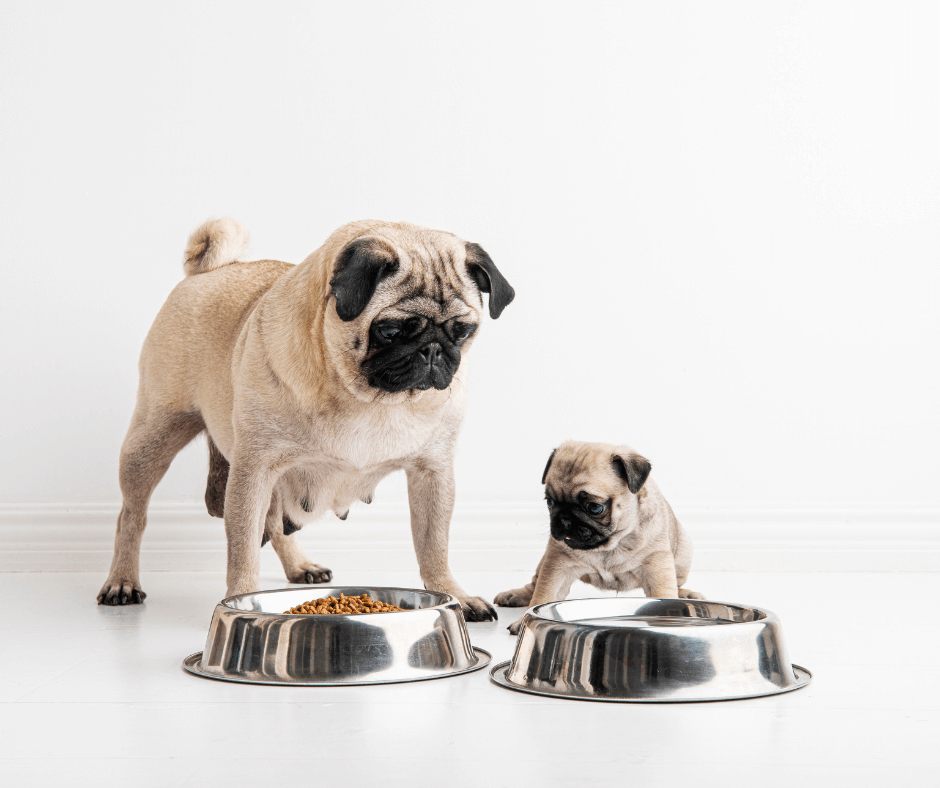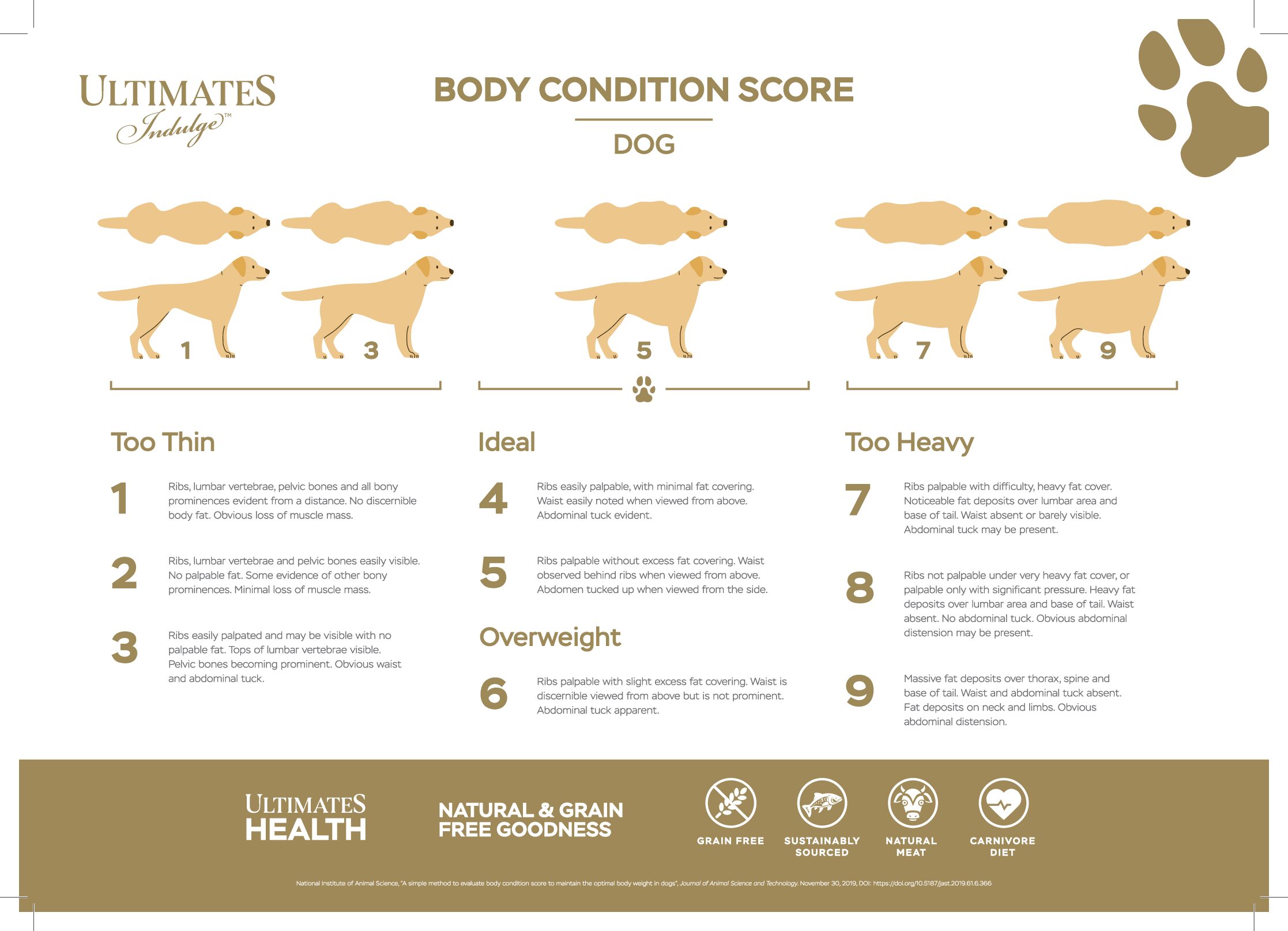How Much Should You Feed Your Dog?

Most dogs are happy to scoff anything edible put in front of them, regardless of content, quality and quantity. Although some dogs stop eating when they are full, most will not. Every individual dog’s nutrition needs vary, depending on their age and stage of life, breed, size, weight, environment and activity levels. This multitude of factors makes it hard to know how much you should feed your dog. There is no blanket answer that applies to every dog.
Your Dog’s Nutritional Needs
Opinions are divided on whether dogs are carnivores or omnivores. Dogs aren’t cats, which are obligate carnivores, meaning they need a high protein and high fat diet. Dogs are not wolves, though they evolved from them. Wolves are carnivores; they live a feast-and-famine lifestyle. They consume a concentration of calories and nutrients in the form of meat, organs and fat that has to last them some time before their next kill.
While omnivores produce the enzyme amylase in their mouths, which aids the digestion of starch-rich foods, amylase is only found in a dog’s gut. This is also true for the wolf, however, a dog produces a lot more amylase than the wolf. A dog also possesses a shorter GI tract, like that of a carnivore.
It is little wonder opinion is divided. It seems dogs are in the middle. Not obligate carnivores, nor totally omnivore.
Meat, Fats and Water
One thing is for sure, dogs need a meat-rich diet to provide adequate quantities of the nutrition they need. Meat is a rich source of arginine, which dogs need in order to produce bile, and to maintain the right balance of nitrogen in their bodies. The protein in meat helps with muscle growth – vital as dogs age – and help strengthen the immune system. Meat also gives dogs a healthy, shiny coat.
Fats are vital in a dog’s diet. They contain essential fatty acids – essential because they’re not produced in a dog’s body, but are needed for optimal function of muscle tissue, body cells and nerves. These essential fatty acids help the production of prostaglandin, which helps reduce inflammation, and aid in the absorption of vitamins A, D, E and K.
It may go without saying, but it’s vital to include the importance of water. Refresh your pup’s water bowl every day with clean water.

So, How Much?
The dog food you choose should include a feeding guide on the label. This simple table, constructed according to adult dog weight, gives an indication of how much food your dog will need. Divide these figures by the number of meals you give your pooch per day. Adult dogs generally eat two meals each day.
Total Meal Size Per Day According to Weight
| WEIGHT (kg) | CUPS/DAY | CALORIES/DAY |
| Toy | ||
| 1.5 | ⅓ | 140 |
| 3kg | ½ | 235 |
| Small | ||
| 4.5 | ¾ | 340 |
| 7 | 1 | 465 |
| 9 | 1½ | 575 |
| Medium | ||
| 13.5 | 1¾ | 780 |
| 18 | 2¼ | 970 |
| 23 | 2 ⅔ | 1145 |
| Large | ||
| 27 | 3 | 1315 |
| 32 | 3½ | 1475 |
| 36 | 3¾ | 1630 |
| 41 | 4¼ | 1780 |
| 45 | 4½ | 1925 |
Factors That Affect a Dog’s Meals
Stage of Life
At the beginning of life, puppies nurse on demand until they are around eight weeks old, when they generally leave Mum. In our homes, puppies require frequent feeding. They grow and develop at such a rapid rate, and require a regular input of quality calories. Your veterinarian and breeder will help with the size of each meal according to their breed – different breeds have particular and predictable growth and metabolic rates. Adjustments are made as a dog ages, gradually reducing the frequency to two meals per day.
A pregnant or lactating dog will need more fuel to feed her growing pups. Your veterinarian will advise you on her changing nutritional needs.
Health
If your dog’s health changes, their diet will need adjustment. If they develop digestive issues, health conditions or begin taking medication, the ingredients of their food and portion sizes will likely vary from the chart above.
Lifestyle and Environment
An inactive pooch with a tendency to gain weight won’t need as much food as a very active dog. Use your pup’s weight as a guide, taking care not to make drastic changes to their meals.
If you suspect your dog may be obese, please seek veterinary advice. According to a study conducted by the University of California, just over 40% of domestic dogs are overweight or obese. In any dog, obesity brings with it health problems, such as orthopaedic diseases.
Dogs that live in cold climates will need larger meals. The extra calories form a needed layer of fat to aid in the preservation of body temperature, much like a blanket. Additionally, larger meals make up for calories lost in keeping up that body heat.
What About Treats?
Ahhh, treats. What would life be without them?
As a general rule, treats should make up no more than 10% of a dog’s daily calorie intake. Be choosy; check the ingredients. Ignore the cute begging and take care with table scraps; there are human foods that can make dogs quite unwell. Read more in Watch Out – Dangerous Food for Dogs.
Feeding your dog a balanced and nutritious diet is key to a healthy and happy pup. Some dogs need more or less than others, based on breed, activity, age and stage of life, and any changes to health. Provide plenty of fresh, clean drinking water and give treats in moderation. You’re well on your way to giving your dog the best chance of a long and healthy life.
